The Wellcome Trust is a global charity that supports biomedical research into human and animal health, part of which is the Wellcome Collection – a London-based gallery and online resource that explores the connections between medicine, life and art in the past present and future.
Visit the gallery or website or do your own reach to find examples of illustrators who have adapted their image-making approach to accommodate advances in imaging technologies. You could take this from a historical perspective, looking at illustrators who brought new technologies into their work as a particular point in time, or find contemporary examples of illustrators working with new technologies.
How does this compare with more traditional image-making approaches?
As natural science illustration covers such a broad range of topics, I initially decided to focus on botanical illustration as this would relate directly to the upcoming exercise. However, I found it incredibly difficult to find any scientific illustrators working in this genre that solely use ‘modern’ tools such as working digitally. The vast majority seem to use watercolour over either pencil or pen outlines.
One example that I did find was Niki Simpson who creates illustrations that include digital composites of photographs. In her diagrammatic illustrations, Simpson adds labels and measurements to help identify the plant species.
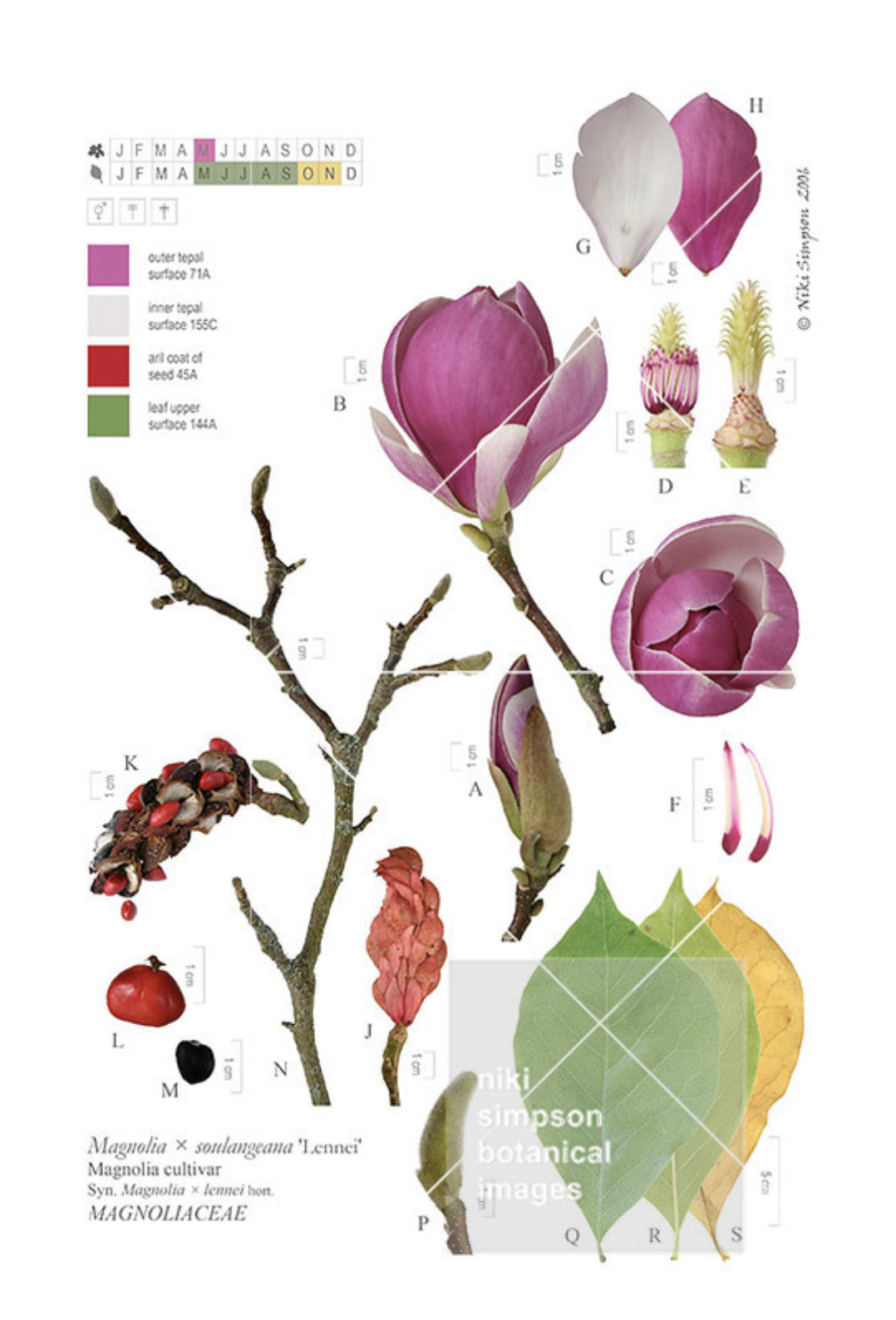
Source: Niki Simpson.
The two examples provided in the OCA reading material, Hannah McVicar and Angie Lewin, both use the more traditional analogue methods mentioned alongside screen printing, linocutting and wood engravings. I do not think that I would class either McVicar and Lewin as ‘scientific illustrators’ as their works appear to be more decorative than scientific.
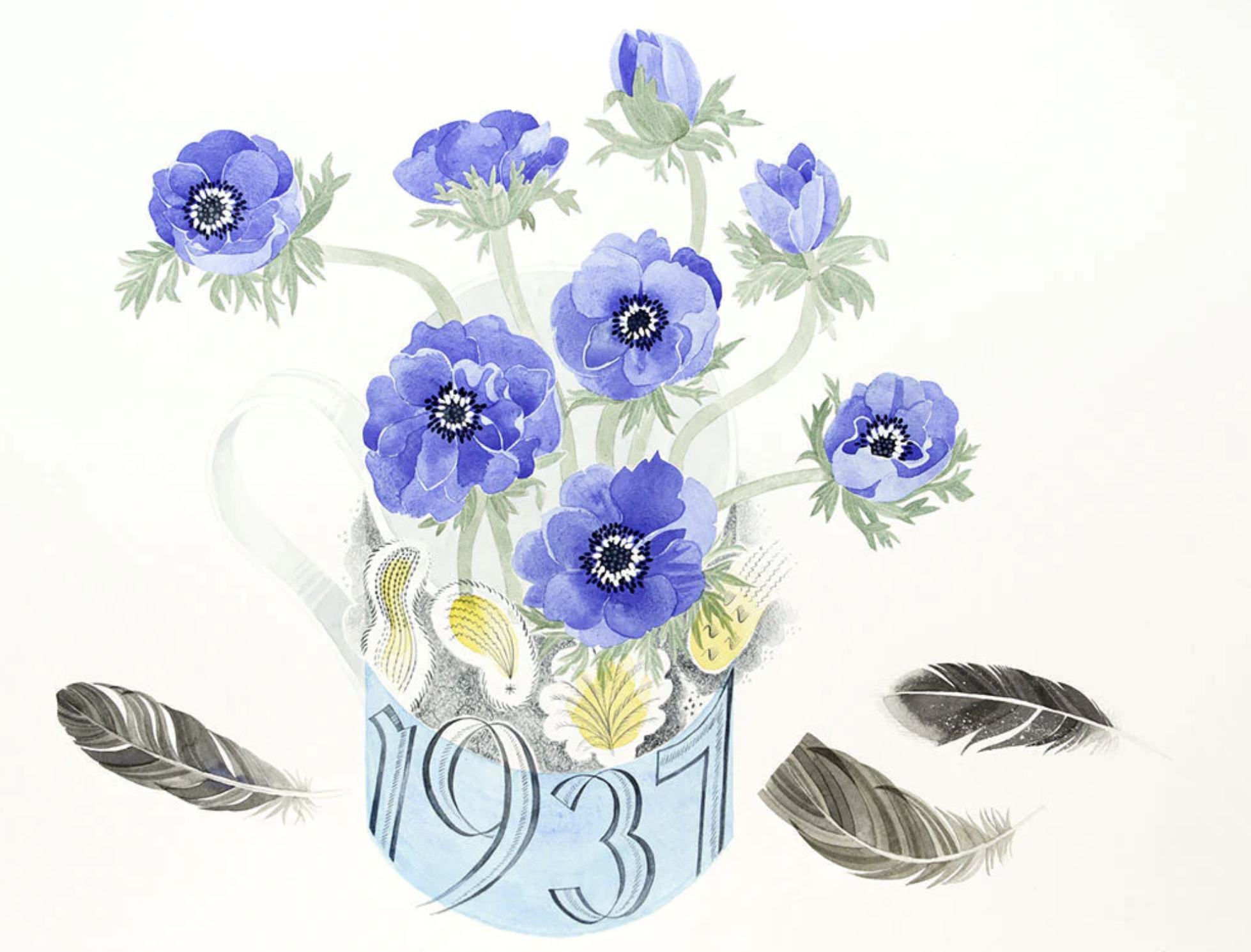
Another illustrator I found, Katie Scott, combines analogue and digital tools to create her artworks. I found a short video of Scott describing her process on the V&A website, in which she describes drawing the outlines in pencil and pen before scanning these into Photoshop where she adds colour and texture.
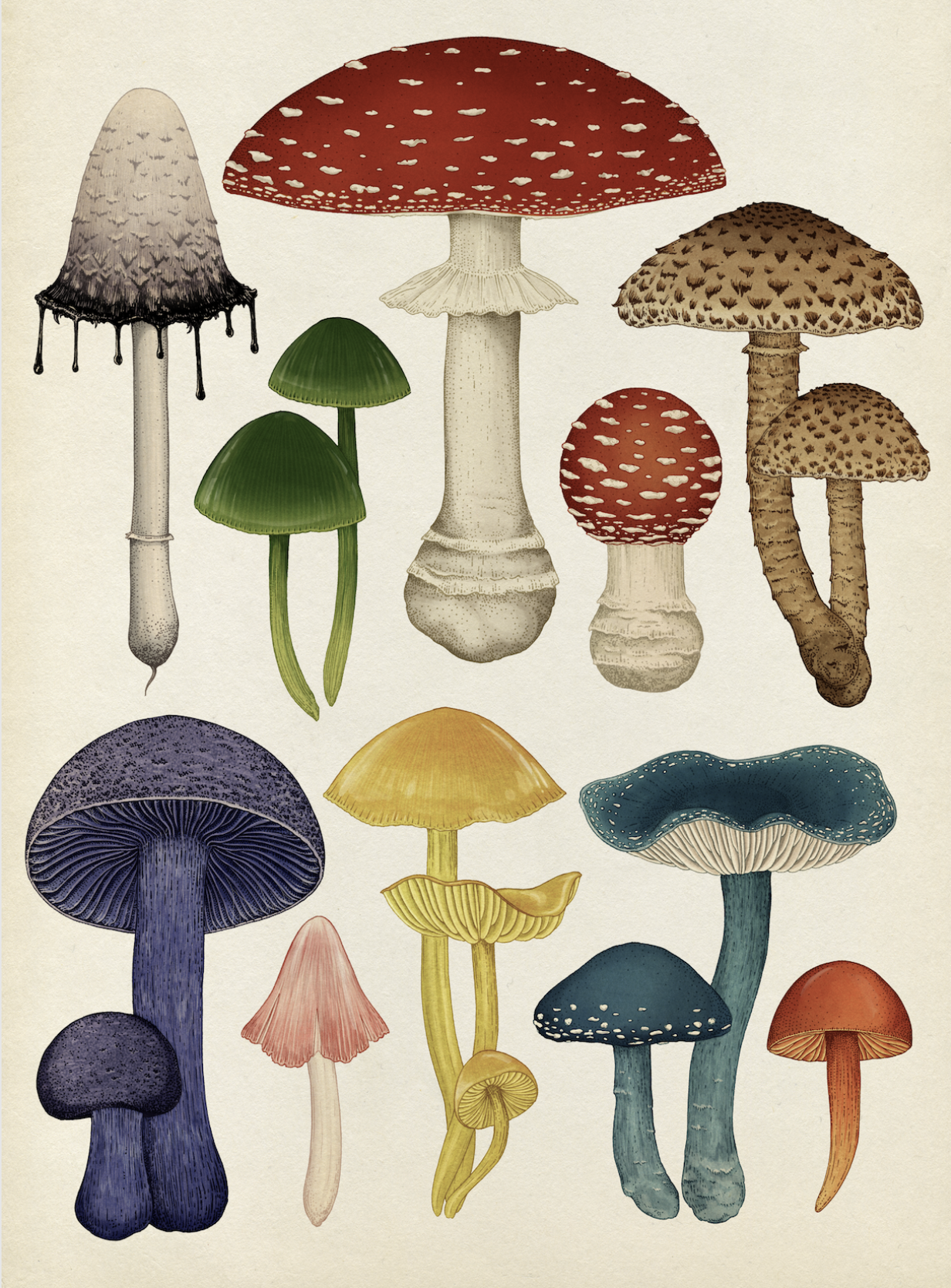
For information regarding practitioners of truly scientific botanical illustration I found Kew Gardens to be the most obvious source. Indeed, there is plentiful information regarding this genre, which details how precise these illustrators have to be, e.g. measuring specimens and carefully matching colours, in order to produce reliable, informative and objective illustrations. The illustrators may use scientific technology such as powerful microscopes to look at the detail of specimens, but, again, they use the traditional artist tools of pencil, pen and watercolours to create the illustrations.
I decided to briefly explore if other areas of natural science would be similar in terms of the use of imaging technology. I took the example of Gray’s Anatomy which was written by Henry Grey and llustrated by the (often forgotten) Henry Vandyke Carter. It was first published in 1858. Woodcuts of Carter’s original drawings were used in the printing process of this book.
Although by the mid 19th century, the technology of photography was becoming more available, illustrations remained invaluable for medical reference books as the illustrator is able to provide more specialised material, for example, by adding emphasis to specific areas or drawing cross sections, as in the example below.
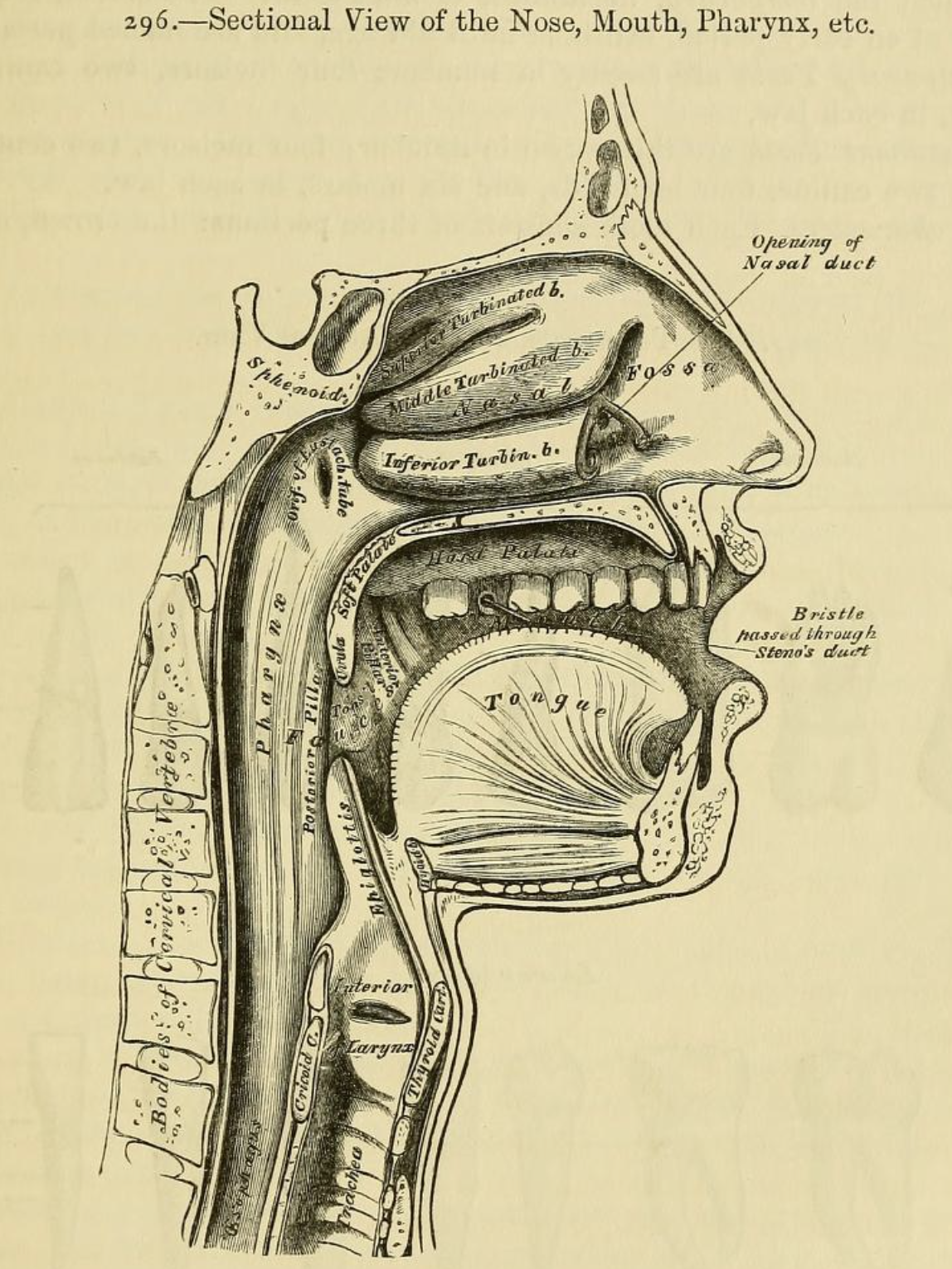
Source: Internet Archive.
As a side note, I think this book perfectly demonstrates the power of illustration as a form of communication – there are pages and pages of densely-detailed, written descriptions, which have be summarised in clear and comprehendible visuals such as the one above.
When compared to botany, I found there are many more examples of present-day illustrators that use new technologies in the field of medical illustration. An example is Bryan Christie Design. They use 3d software to create the illustrations and specialise in ‘illustrating the unseeable’ as can be seen in the example below where the specific organs can be highlighted and their position shown within the context of the body. These types of illustration are more dynamic and could be described as more visually interesting than the static, flat ink drawings like those found in Carter’s illustrations. However, I think there is a place for both forms as illustrations in the style of the latter’s are without any visual distractions and purely educational.
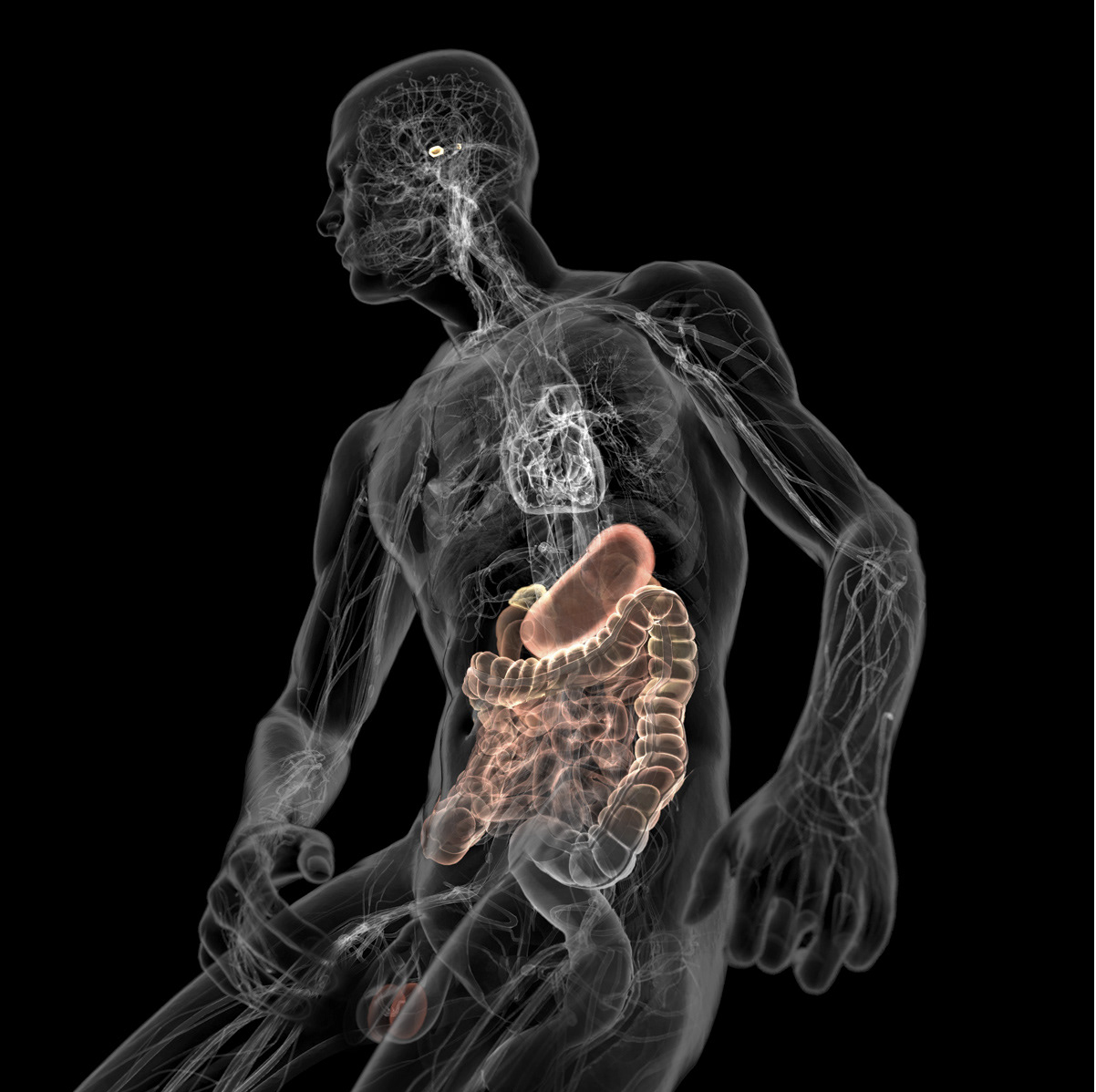
Summary
When referring to strict natural science illustration (rather than decorative illustration) the main purpose is to communicate the information required clearly and concisely, regardless of the media chosen to create it. Some of the key skills required of an illustrator working in this field include the ability to guide the viewer’s attention by:
- highlighting/emphasising the relevant sections;
- employing the use of cutaways or cross-sections;
- removing any lighting, shading, colour etc present in the source material as necessary;
- visually communicating the essential information in a understandable format that cannot be achieved through descriptive text alone;
- editing visual information so that only the necessary material is included, therefore removing any distractive elements.
Although there remains a prevalence for traditional tools in modern day natural science illustrations, the illustrator Alice Rosen makes the valuable point that:
…scientific understanding is enhanced by advanced photographic tools and imaging technology that allow a detailed view of the subject without damaging the specimen.
Alice Rosen
Natural science illustrators have further advantages over photography including being able to visualise extinct species.
There are also several benefits of combining both traditional and digital tools such as the ability to add layers, which can then have the opacity reduced to show the underlying detail.
I found it interesting how prevalent the use of watercolour remains specifically in the production of scientific botanical illustration. Alongside the benefits of traditional tools already mentioned, I wonder if this choice of media also reflects the often delicate nature of the subjects, which watercolour is ideal for.
Bibliography
Akram, R. (2017) The woman who made science beautiful. Available at: https://www.kew.org/read-and-watch/the-woman-who-made-science-beautiful (Accessed 14 February 2023).
Boldison, M. (2019) In Pictures: Botanical artists at Kew. Available at: https://www.kew.org/read-and-watch/in-pictures-botanical-artists-at-kew (Accessed 14 February 2023).
Brewer, G. (2020) Women who transformed the world of plants and fungi. Available at: https://www.kew.org/read-and-watch/celebrating-women-international-womens-day (Accessed 14 February 2023).
Bryan Christie Design (2016) Bryan Christie Design. Available at: https://bryanchristiedesign.com (Accessed 16 February 2023).
Buckley, J. (2017) Miss Drake – a skilled illustrator of orchids. Available at: https://www.kew.org/read-and-watch/miss-drake-illustrator-orchids (Accessed 14 February 2023).
Buckley, J. (n.d.) Meet Lucy T Smith, award-winning botanical illustrator. Available at: https://www.kew.org/read-and-watch/meet-lucy-smith-botanical-illustrator (Accessed 14 February 2023).
Higgins, A. (2020) Botanical illustration is becoming endangered, but the job is essential. Available at: https://www.washingtonpost.com/lifestyle/home/botanical-illustration-is-becoming-endangered-but-the-job-is-essential/2020/01/28/24636724-3dff-11ea-8872-5df698785a4e_story.html (Accessed 15 February 2023).
Internet Archive (n.d.) Internet Archive: Digital Library of Free & Borrowable Books, Movies, Music & Wayback Machine. Available at: https://archive.org/ (Accessed 15 February 2023).
Kemp, M. (2010) Style and non-style in anatomical illustration: From Renaissance Humanism to Henry Gray. Available at: https://onlinelibrary.wiley.com/doi/10.1111/j.1469-7580.2009.01181.x (Accessed 16 February 2023).
Lewin, A. (2023) Angie Lewin – linocut printmaker, painter and designer. Available at: https://www.angielewin.co.uk/ (Accessed 14 February 2023).
Male, A. (2007) Illustration: A Theoretical & Contextual Perspective. Switzerland: AVA Publishing SA.
May, T. (2020) 16 medical illustrators doing groundbreaking work. Available at: https://www.creativeboom.com/inspiration/16-incredible-examples-of-medical-illustration/ (Accessed 16 February 2023).
McVicar, H. (2021) Hannah McVicar: Illustrator, Bristol. Available at https://www.hannahmcvicar.com/ (Accessed 15 February 2023).
Medical Illustration & Animation (2019) Medical Illustration and Animation: Association of Medical Illustrators. Available at: http://www.medillsb.com/ (Accessed 16 February 2023).
National Tropical Botanical Gardens (2019)The Science of Art – why Botanical Illustration Matters. Available at: https://ntbg.org/news/the-science-of-art-why-botanical-illustration-matters/ (Accessed 14 February 2023).
Olorunshea, Y. (2021) In Pictures: A Botanical Rainbow. Available at: https://www.kew.org/read-and-watch/a-botanical-rainbow-in-pictures (Accessed 154 February 2023).
Parker, L. (2018) Fabulous fungi: the illustrations of Elsie M Wakefield. Available at: https://www.kew.org/read-and-watch/fabulous-fungi-the-illustrations-of-elsie-m-wakefield (Accessed 14 February 2023).
Parker, L. (2017) Walter Hood Fitch – an ‘incomparable botanical artist’. Available at: https://www.kew.org/read-and-watch/walter-hood-fitch-an-incomparable-botanical-artist (Accessed 15 February 2023).
Railton, F. (2016) Incredible insects: the life and work of Maria Sibyl Merian. Available at: https://www.kew.org/read-and-watch/incredible-insects-the-life-and-work-of-maria-sibylla-merian (Accessed 15 February 2023).
Reid, E. (2022) Elegant and Enchanting. Available at: https://www.kew.org/read-and-watch/elegant-and-enchanting-exhibition (Accessed 15 February 2023).
Rosen, A. (n.d.) Alice Rosen Illustration. Available at: https://aliceillustration.com/scientificillustration (Accessed 14 February 2023).
Scott, K. (2023) Katie Scott – Commissions. Available at: https://katie-scott.com (Accessed 14 February 2023).
Simpson, N. (2023) visual botany Niki Simpson digital botanical illustration. Available at: https://www.visualbotany.co.uk (Accessed 14 February 2023).
Sooke, A. (2014) Leonardo da Vinci’s groundbreaking anatomical sketches – BBC Culture. Available at: https://www.bbc.com/culture/article/20130828-leonardo-da-vinci-the-anatomist (Accessed 16 February 2023).
Thomson Environmental Consultants (2021) Scientific illustration: when art meets science. Available at: https://www.thomsonec.com/news/scientific-illustration-when-art-meets-science/ (Accessed 16 February 2023).
V&A (n.d.) Beatrix Potter. Available at: https://www.vam.ac.uk/collections/beatrix-potter (Accessed 14 February 2023).
V&A (n.d.) Beatrix Potter: Drawn to Nature. Available at: https://www.vam.ac.uk/exhibitions/beatrix-potter-drawn-to-nature (Accessed 14 February 2023).
V&A (2022) Illustration Inspired By Beatrix Potter’s botanical drawing. Available at: https://www.vam.ac.uk/articles/illustration-inspired-by-beatrix-potters-botanical-drawing (Accessed 14 February 2023).
Wellcome Collection (n.d.) Wellcome Collection. Available at: https://wellcomecollection.org/ (Accessed 14 February 2023).
Westlake, M. (2019). What is botanical art? Available at: https://www.kew.org/read-and-watch/what-is-botanic-art (Accessed 14 February 2023).
Wikipedia (n.d.) Henry Vandyke Carter. Available at: https://en.wikipedia.org/wiki/Henry_Vandyke_Carter (Accessed 16 February 2023).